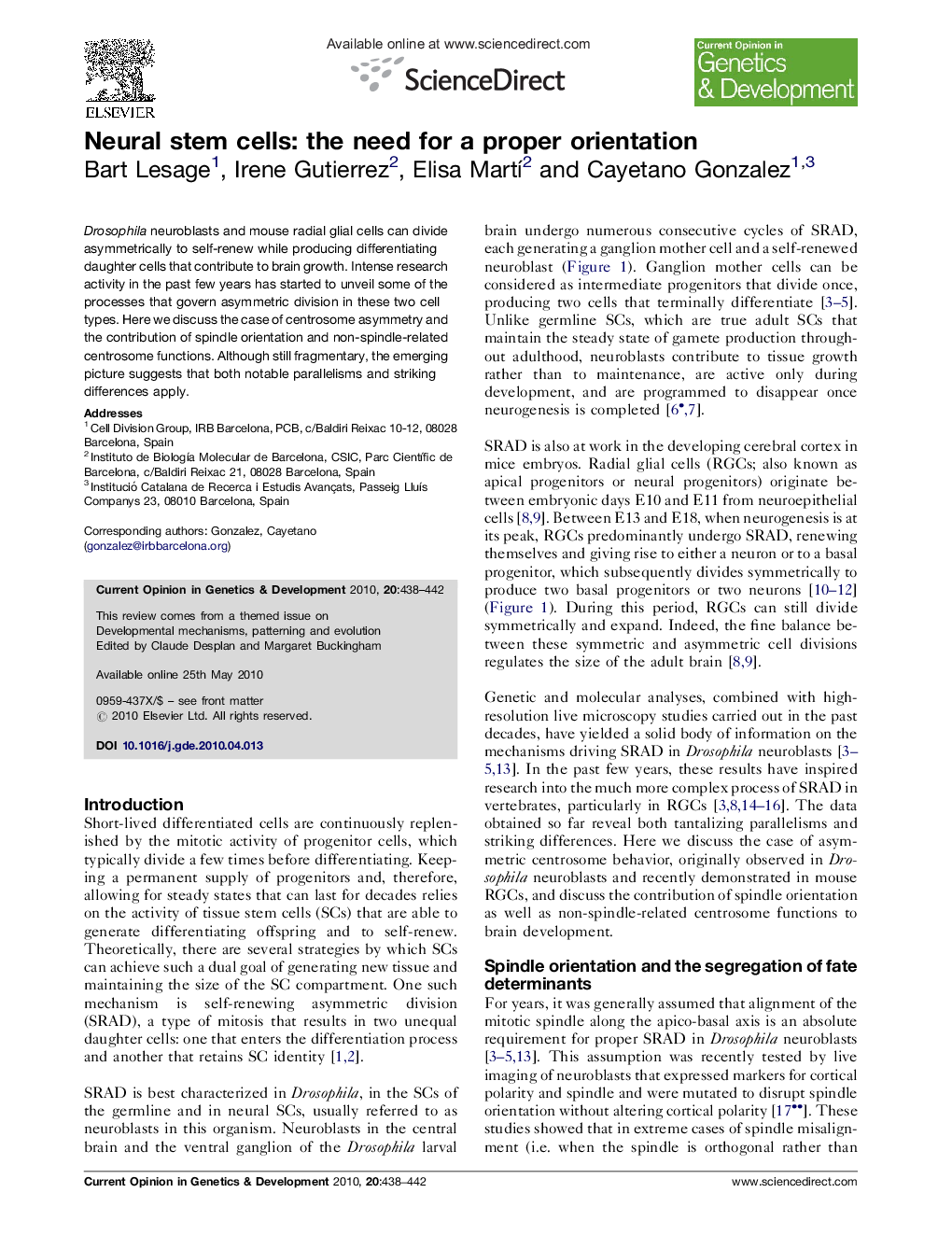| Article ID | Journal | Published Year | Pages | File Type |
|---|---|---|---|---|
| 2785045 | Current Opinion in Genetics & Development | 2010 | 5 Pages |
Abstract
Drosophila neuroblasts and mouse radial glial cells can divide asymmetrically to self-renew while producing differentiating daughter cells that contribute to brain growth. Intense research activity in the past few years has started to unveil some of the processes that govern asymmetric division in these two cell types. Here we discuss the case of centrosome asymmetry and the contribution of spindle orientation and non-spindle-related centrosome functions. Although still fragmentary, the emerging picture suggests that both notable parallelisms and striking differences apply.
Related Topics
Life Sciences
Biochemistry, Genetics and Molecular Biology
Developmental Biology
Authors
Bart Lesage, Irene Gutierrez, Elisa Martí, Cayetano Gonzalez,
